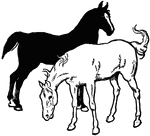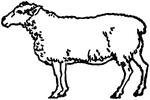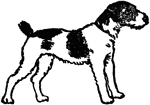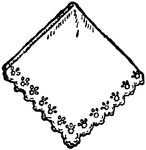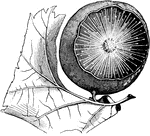
Oak Apple Gall
"Gall, or Oak-apple, produced by Cynips quercus-inanis, showing the internal cobwebby structure. Gall:…

Farm Animals in Corral
An illustration of farm animals, including two horses, three pigs, and a cow.

Man and Boy Riding Horses
An illustration of a man riding a white horse and a boy riding a black horse.
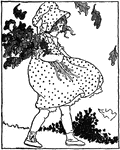
Girl Carrying Branches with Leaves
An illustration of a young girl carrying an armful of fall leaves.
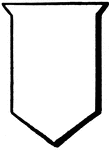
Argent Shield Metal
A shield or escutcheon emblazoned with the metal tincture, argent (silver), represented by white.
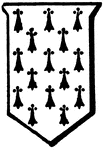
Ermine Shield Fur
A shield or escutcheon emblazoned with the fur, ermine, represented by sable (black) ermine spots on…
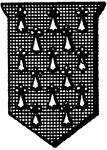
Ermines Shield Fur
A shield or escutcheon emblazoned with the fur, ermines, represented by argent (silver) ermine spots…
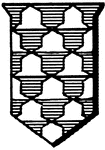
Vair Shield Fur
A shield or escutcheon emblazoned with the fur, vair, represented by alternating azure (blue) and argent…
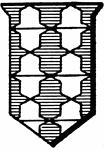
Counter-Vair Shield Fur
A shield or escutcheon emblazoned with the fur, vair, represented by alternating azure (blue) and argent…
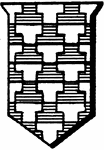
Potent Shield Fur
A shield or escutcheon emblazoned with the fur, potent, represented by alternating azure (blue) and…
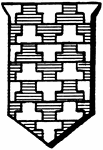
Potent-Counter-Potent Shield Fur
A shield or escutcheon emblazoned with the fur, potent-counter-potent, represented by alternating azure…
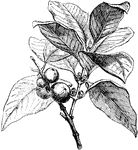
Branch of Gambooge
The Gambooge tree (Garcinia gummi-gutta) is a plant in the Clusiaceae family. The species was also known…
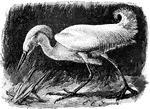
Snowy Egret
The Snowy Egret (Egretta thula) is a small white heron in the Ardeidae family. It was also known as…

Ostrich
"Struthio camelus, the Ostrich or "Camel-bird" of North Africa now extends from Barbary to Arabia, and…

Nandu
Nandu or "Rhea Americana, the so-called American Ostrich... is found from Bolivia Paraguay, and South…

Great Northern Diver
The Great Northern Diver, Colymbus glacialis, "...is black above, with belts of white spots making a…

Little Grebe
"Both sexes of the Little Grebe are mainly dusky brown or blacking grey above, and silvery white below,…
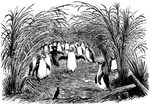
A Troop of Crested "Maccaroni" or Rock-Hopper Penguins Nesting Under the Shade of Tussock of Trees
This is a troop of crested "Maccaroni" or Rock-hopper penguins nesting "under the shade of tussocks…
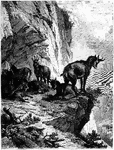
Chamois
The chamois (Rupicapra rupicapra) is a goat-like animal, living at moderately high altitudes and are…
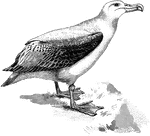
Wandering Albatros
"The Wandering Albatros of the Southern Oceans is white with narrow dusky undulations above and almost…

Storm Petrel Swimming with Reflection
The storm Petrel "of the Mediterranean and North Atlantic from Greenland to South Africa, which breeds…

Tropic Bird Sitting on a Ledge
The Tropic Bird " are chiefly found in the tropical regions of the south; ... this species breeds as…
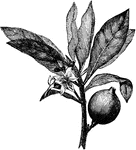
Huito
The Huito (Genipa americana) is a small tree with edible fruit in the madder family, Rubiaceae.
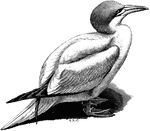
Gannet
"The Gannet (S. bassana) has slate-grey wing-quills, purplish-grey bill, reddish feet and naked parts."…

Cormorant
The Cormorant "P. carbo, but has a tuft of long narrow recurved plumes on each side f the crown in the…

Indian Darter
"The Indian Darter (Plotus melangaster) or snake-bird of tropical and subtropical America, ranging northwards…
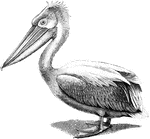
Crested Pelican
"The Crested Pelican or (Pelecanus crispus) is white with rosy or salmon tinge, the primaries being…

Common Heron
"The most typical forms of Ardea (Common Heron) are large slaty-coloured birds, varied by black, rufous,…

Shoebill
"Balaeniceps rex, the Shoebill, of the White Nile, has a short crest, and is brownish-grey with blackish…
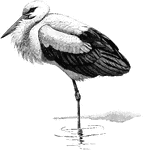
White Stork
"Ciconia ciconia, the White Stork, ...is white with black wings and orbits, red bill and feet." A. H.…

Spoonbill Standing on One Leg
"Platalea leucorodia, the Spoonbill, has white plumage, with bare lores, orbits, and throat, and a fine…
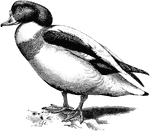
Shelduck
Tadorna cornuta, the Sheld-Drake or Bargander, ...shews a white collar on the lower neck followed by…

Red-breasted Goose
Bernicla ruficollis, the Red-breasted Goose of West Siberia, which migrates southwards, strays to Britain…
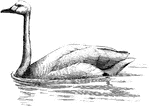
Bewick's Swan
"Cygnus bewicki, Buck's Swan, is white with black feet and bill, the basal half of the latter being…
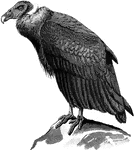
Condor
"On the Sarcorhamphus gryphus the Condor, the head and neck are bare, with dull red skin, wrinkled in…
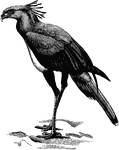
Secretary Bird
"Standing some four feet high on very long legs, this bird (Secretary Bird) gives the impression of…
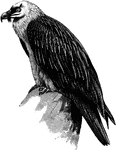
L&emumlmmergeier
"Gypaëtus barbatus, the magnificent L&emumlmmergeier, is greyish-black with white streaks, and has…

Two Sparrow Hawk in a Large Flat Nest of Twigs with Five Young Sparrow-Hawk Beside a Tree Trunk
"Accipiter nisus, the Sparrow-Hawk, which breeds throughout Europe, North Africa, Asia north of the…
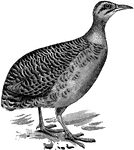
Red-winged Tinamou
"Rhynchotus rufescens,... is grey-brown, with blacker crown, rufous cheeks, neck, and breast, and chestnut…
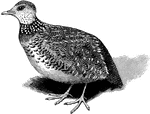
Plain Wanderer
Pedionomus torquatus differs in structure from Turnix by the presence of a small hind-toe. The lax upper…
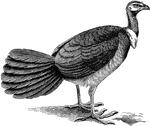
Brush Turkey
"Catheturus lathami, the "Brush Turkey" of Eastern Australia, is blackish-brown with greyish under surface,…
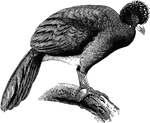
Crested Curassow
Crax alector, Crested Curassow, is black with a purplish gloss, the belly being white, the naked lores…
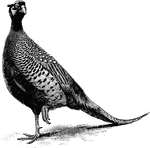
Pheasant
"Phasianus colchicus, Pheasant, ...has a white collar and slaty lower back with dark green barring;…

Red Grouse
"Lagopus scoticus, the Red Grouse or Muirfowl, the only bird entirely confined to our islands, differs…

Hoatzin
"The Hoatzin (Opisthocomus cristatus) is curious and highly specialized. "The body is long and thin,…
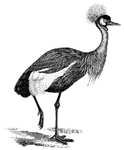
Crowned Crane
"Balearica pavonina, the "Crowned" Crane of the Northern Ethiopian Region, is greenish-black above and…

Seriemá
"Cariama cristata, the Seriemá, or Crested Screamer, extending from Pernambuco to Paraguay and…
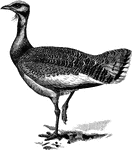
Great Bustard
"The Otis Tarda, the Great Bustard, which, as a native only became extinct in Norfolk about 1838, used…
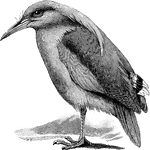
Kagu
"Rhinochetus jubatus, the Kuga ... has powder-down patches that are profusely distributed over the whole…

Sun-Bittern
"Eurypyga helias, Sun-Bittern, has a black head, with a white stripe above and under each eye, and a…
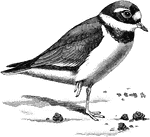
Ringed Plover
"Aegialitis hiaticola, the Ringed Plover, Sand-Lark, or Stone-runner, mistakenly called the "Ring-Dotterel"…
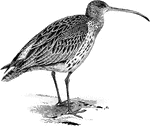
Curlew
"Numenius arquata, the Curlew or Whaup, breeds freely on the moorlands of Britain; and extends throughout…

Indian Jacana
"Hydrophasianus chirurgus, the Indian Jacana, of most of the Indian Region, is Bronzy-brown above and…
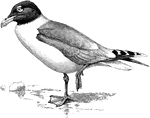
Great Black-Headed Gull
"Larus ichthyaetus, the Great Black-headed Gull, ranging from the Black Sea and the Levant to Tibet,…
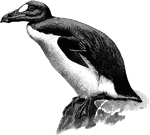
Great Auk
"This species (Alca impennis or Great Auk), extirpated chiefly by the persecution of fisherman, but…
